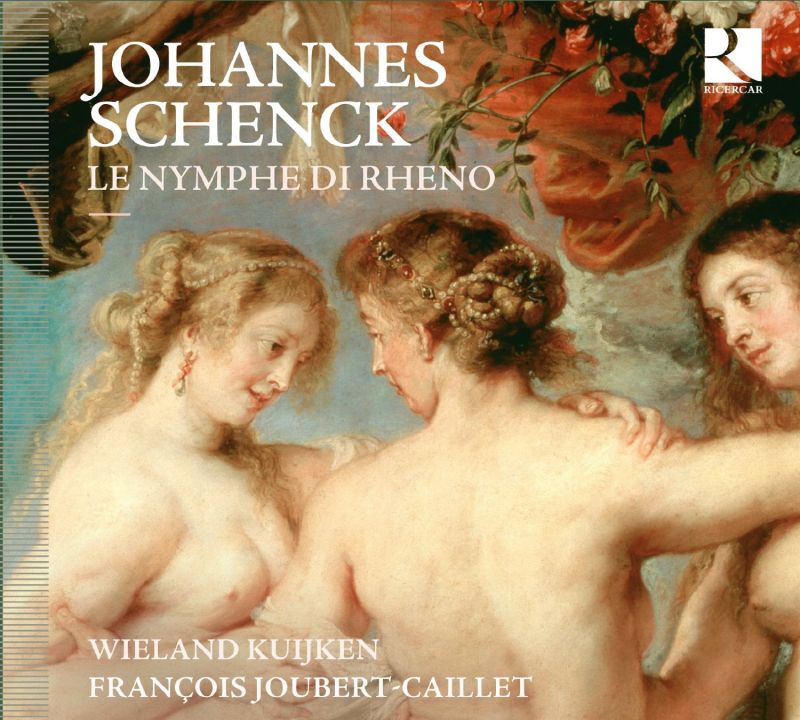SCHENCK Le Nymphe di Rheno
View record and artist detailsRecord and Artist Details
Composer or Director: Johannes Schenck
Genre:
Chamber
Label: Ricercar
Magazine Review Date: 03/2014
Media Format: CD or Download
Media Runtime: 75
Mastering:
DDD
Catalogue Number: RIC336

Tracks:
| Composition | Artist Credit |
|---|---|
| (Le) Nymphe di Reno, Movement: Sonata II in A minor |
Johannes Schenck, Composer
Francois Joubert-Caillet, Bass viol Johannes Schenck, Composer Wieland Kuijken, Bass viol |
| (Le) Nymphe di Reno, Movement: Sonata III in D major |
Johannes Schenck, Composer
Francois Joubert-Caillet, Bass viol Johannes Schenck, Composer Wieland Kuijken, Bass viol |
| (Le) Nymphe di Reno, Movement: Sonata I in B minor |
Johannes Schenck, Composer
Francois Joubert-Caillet, Bass viol Johannes Schenck, Composer Wieland Kuijken, Bass viol |
| (Le) Nymphe di Reno, Movement: Sonata VIII in C minor |
Johannes Schenck, Composer
Francois Joubert-Caillet, Bass viol Johannes Schenck, Composer Wieland Kuijken, Bass viol |
| (Le) Nymphe di Reno, Movement: Sonata VI in G minor |
Johannes Schenck, Composer
Francois Joubert-Caillet, Bass viol Johannes Schenck, Composer Wieland Kuijken, Bass viol |
Author: David Vickers
There are expert recordings of all 12 sonatas by Les Voix Humaines spread across two volumes (Naxos), whereas Wieland Kuijken and François Joubert-Caillet cherry-pick their favourite half-dozen. They play together intuitively in the evocative contrasting movements in Sonata VII in B minor, whether the music is softly melancholy (the Adagio opening) or seductive (the concluding ‘Aria amoroso’). The refracted influence of the French school of viol masters can be glimpsed in numerous dance movements during Sonata VIII in C minor (a thoughtful Allemanda, touching Sarabande, gently swaying Giga and exquisite Rondeau) and the spellbinding Ciacona that concludes Sonata XI in G major, while there is arguably a whiff of the Corellian sonata da chiesa tradition in the Adagio-Allegro alternations of short movements in Sonata III in D major. Everything about this recording conveys thoughtfulness: Ricercar’s informative essay, illustrations (including Roger’s 1702 title-page) and choice of artwork (Rubens’s Three Muses) perfectly complement Kuijken and Joubert-Caillet’s enrapturing performances.
Discover the world's largest classical music catalogue with Presto Music.

Gramophone Digital Club
- Digital Edition
- Digital Archive
- Reviews Database
- Full website access
From £8.75 / month
Subscribe
Gramophone Full Club
- Print Edition
- Digital Edition
- Digital Archive
- Reviews Database
- Full website access
From £11.00 / month
Subscribe
If you are a library, university or other organisation that would be interested in an institutional subscription to Gramophone please click here for further information.




